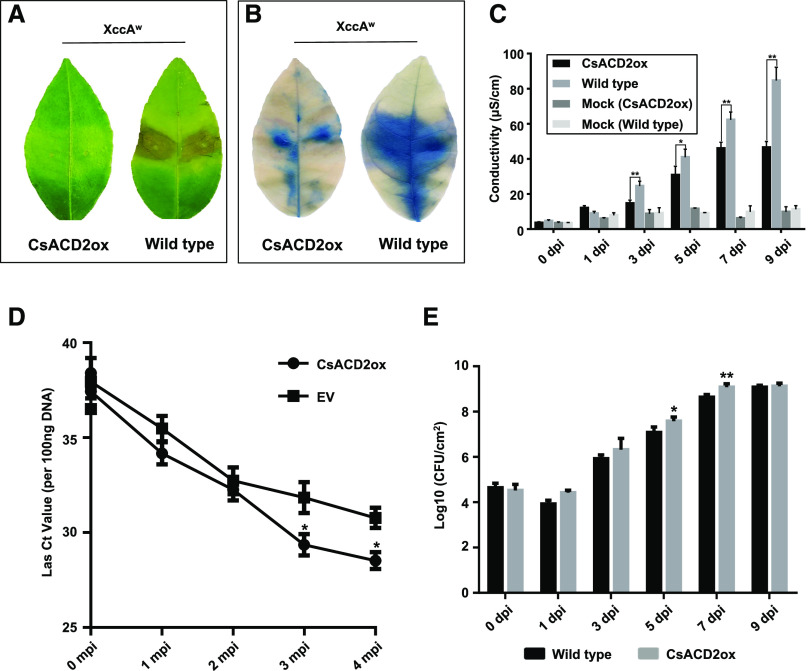Figure 7.
Constitutively expressing CsACD2 in grapefruit suppresses the HR and promotes disease susceptibility. A, HR was observed in the wild-type but not the CsACD2ox-transgenic Duncan grapefruit at 5 d post inoculation (dpi) with XccAW. XccAW cells were infiltrated into citrus leaves at a concentration of 108 CFU mL−1. Photos were taken at 5 dpi with XccAW. B, Trypan-blue staining of the leaves inoculated with XccAW at 3 dpi indicated HR was repressed in CsACD2ox transgenic Duncan grapefruit. Whole leaf inoculated with XccAW was collected at 3 dpi and immersed with trypan-blue staining solution for 6 h with gently shaking, then de-stained with 98% to 100% ethanol. C, Dynamic electrolyte leakage assay associated with the HR induced by XccAW. Leaf discs were floated on deionized water with shaking. The conductivity of the solution was measured after 4 h shaking. Error bars indicate se (n = 3). Asterisks represent significant differences between CsACD2ox transgenic citrus and nontransgenic control by one-way ANOVA with posthoc test (*P < 0.05 and **P < 0.01). D, Las titers in the CsACD2ox transgenic citrus and EV-transgenic control citrus were determined by TaqMan qPCR at 0, 1, 2, and 3 months post infection (mpi) with Las. Each Ct value was represented by means ± se (n = 6). Asterisks represent significant differences in the Las titer between CsACD2-transgenic citrus and nontransgenic control by one-way ANOVA with posthoc test (*P < 0.05). E, Bacterial titers of XccA 306 in the CsACD2ox transgenic and nontransgenic Duncan grapefruit. Bacterial cells were infiltrated into citrus leaves at a concentration of 106 CFU mL−1. Error bars indicate se (n = 4). Asterisks represent significant differences in the bacterial population between the CsACD2ox-transgenic citrus and nontransgenic control by one-way ANOVA with post hoc test (*P < 0.05 and **P < 0.01).

